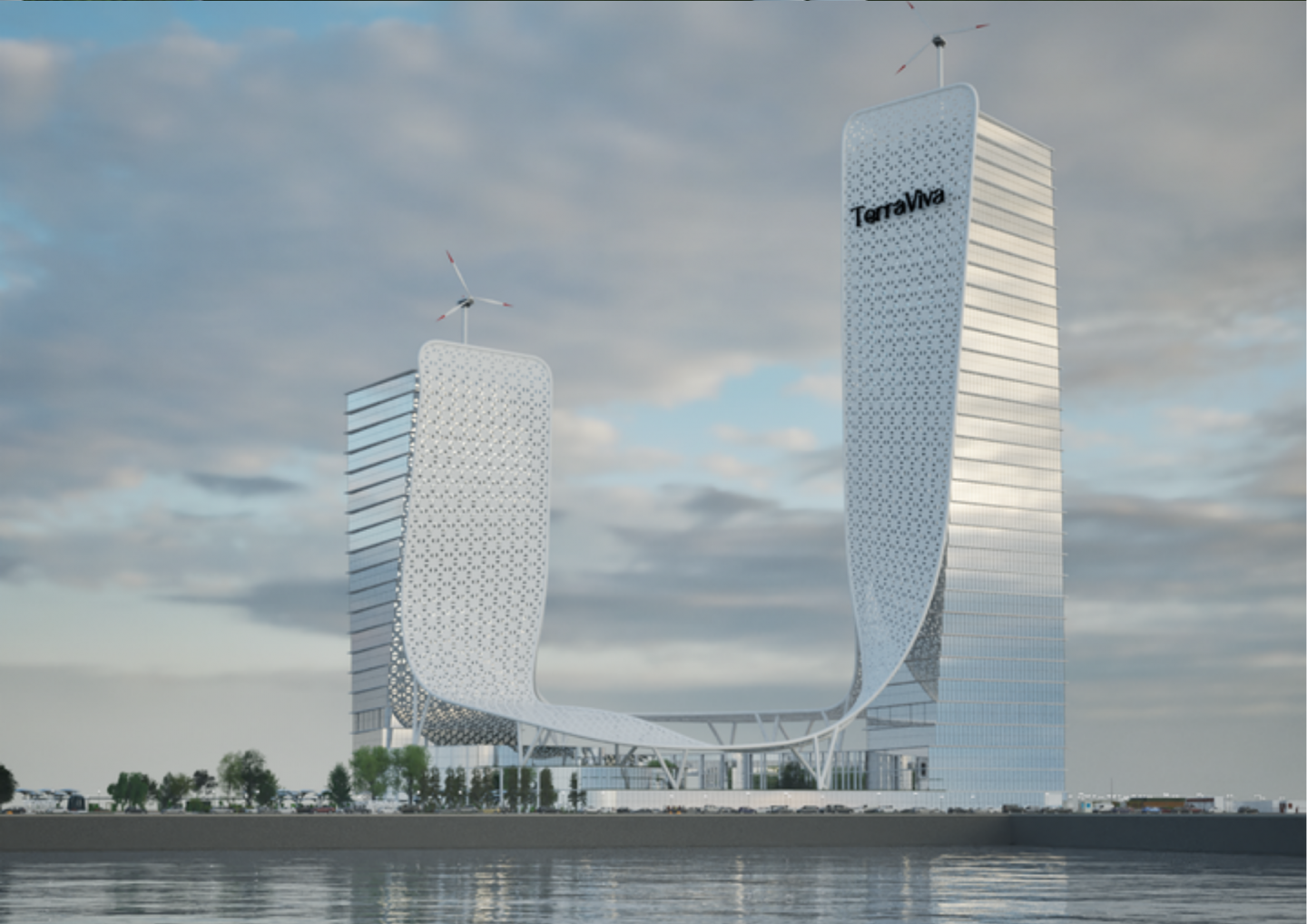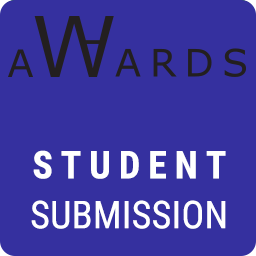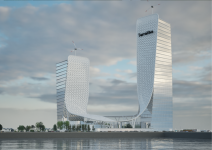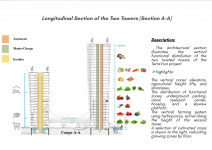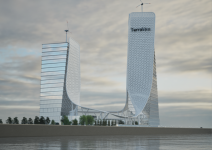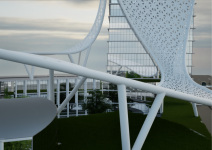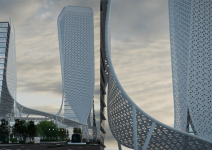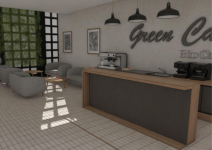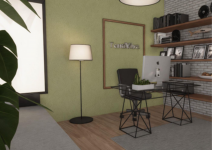TerraViva is a visionary vertical farming tower designed to address urban food security, climate resilience, and ecological integration within the dense urban fabric of Algiers. The project responds to the increasing demand for sustainable food production systems by proposing a hybrid high-rise that combines agriculture, research, and co-living functions. TerraViva redefines the architectural response to environmental challenges by merging built form with biological processes.
Rising 112 meters over 30 floors, the tower is structured as a parallelepiped and features a double-skin façade composed of high-performance glass integrated with discreet photovoltaic panels. This envelope supports passive environmental strategies such as natural ventilation, solar control, and daylight harvesting. Integrated vertical gardens, operating through a closed-loop hydroponic system, transform the building into a living infrastructure that produces fresh food year-round with minimal resource input.
The program includes a variety of functions: agroecological laboratories, training centers for urban farmers, food market spaces, and co-housing for researchers and students. At its base, the project integrates the FarmBox concept — mobile urban farming modules made from recycled shipping containers. These units can be deployed across different neighborhoods to activate underused spaces and promote local food systems.
Rooted in biomimetic and regenerative design, TerraViva draws from North African environmental strategies such as rainwater harvesting, passive cooling, and the use of locally sourced materials. The project envisions architecture not only as shelter but as a productive ecosystem — one that educates, nourishes, and regenerates the urban environment.
2024
Project Location: Algiers, Algeria
Site Area: 4,000 sqm
Building Footprint: 1,200 sqm
Gross Floor Area (GFA): 36,000 sqm
Built-up Area Percentage: 30% of total site area
_______________________________________________
- Structural Systems
Core: Reinforced Concrete Central Core (Rigid and Shear-Resistant)
Floors: Post-Tensioned Concrete Slabs Supported by Perimeter Columns
Twist Mechanism: Gradual Rotational Offset of Floor Plates Around Core (≈ 1.5° per level)
Lateral Stability: Diagonal Mega-Bracing Tuned Mass Dampers at Top Levels
Base Level: Modular FarmBox Units Made from Recycled Shipping Containers
_____________________________________________________________________________
- Facade Systems
- Double-Skin Façade :
Outer Layer: Curved High-Performance Glazing with Integrated BIPV Panels
Inner Layer: Fixed Glass Panels with Operable Vents
Intermediate Air Cavity: Stack Ventilation Insulation Buffer
Vertical Farming System: Hydroponic Panels Integrated on Shaded Façade Strips
Solar Shading Devices: Parametrically Generated Louvers Following the Twist
________________________________________________________________________________
- HVAC and Environmental Systems
Cooling/Heating: Central HVAC System with Chilled Beams and Geothermal Support
- Ventilation :
Natural Ventilation Enhanced by Stack Effect in Twisted Shaft
Mechanical Ventilation for Controlled Zones (labs, housing, market)
Humidity & Climate Control: Zoned Climate Regulation with Hydroponic Sensors
- Irrigation:
Closed-Loop Hydroponic System with Greywater Recycling
Rainwater Collection Integrated in Roof and Façade Modules
- Energy :
Photovoltaic Glass Panels (BIPV) on Façade
Wind Turbines on Rooftop (Horizontal Axis)
Lead Designer : SOUDANI Bilal
Supervising Professor : Mme KDROUSSI Houda Wafa
Voted 0 times
